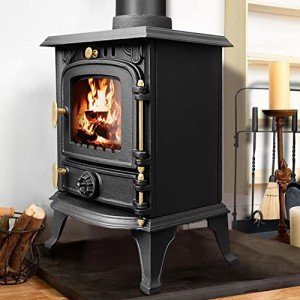The Rise of Multi Fuel Stoves in the UK: A Comprehensive Guide
Multi fuel stoves have actually gotten significant appeal in the UK over the last decade, and for good factor. They offer the beauty of traditional wood-burning stoves while providing the flexibility to utilize a variety of fuel types. Whether for heating up a home, creating a comfortable ambiance, or reducing carbon footprints, multi fuel stoves have become a staple in lots of families. This short article explores the numerous elements of multi fuel stoves, including their benefits, types, installation pointers, and maintenance practices.
What is a Multi Fuel Stove?
A multi fuel stove is a kind of heating device that can burn various types of fuel, generally wood and smokeless coal. Unlike traditional wood stoves, which are limited to burning wood, multi fuel stoves are created with a versatile burner system that accommodates numerous fuel types. This flexibility makes them an attractive alternative for property owners seeking efficiency and sustainability in their heating techniques.
Benefits of Multi Fuel Stoves
Flexible Fuel Options:
- Multi fuel stoves offer the capability to use numerous fuels, consisting of:
- Wood logs
- Coal
- Briquettes
- Peat
- This flexibility permits property owners to select the fuel that best fits their availability and choice.
Sustainability:
- Using renewable fuels like wood can minimize dependence on nonrenewable fuel sources, thus reducing carbon emissions.
- Multi fuel stoves are frequently more efficient than standard open fires, allowing for a greater heat output with less fuel.
Cost-Effectiveness:
- Using a combination of fuels can be more economical, especially in locations where one kind of fuel is more easily available or cost effective than others.
- Many users find that they can warm their homes at a lower expense compared to central heating unit.
Visual Appeal:
- Multi fuel stoves offer a warm and inviting ambiance, perfect for living areas.
- Available in different styles and surfaces, they can boost the design of any room.
Boosted Heat Output:
- These stoves are created to produce constant heat, making them suitable for heating larger areas.
Types of Multi Fuel Stoves
Different models of multi fuel stoves cater to different heating needs, choices, and budgets. Below are some typical types:
| Stove Type | Description | Suitable For |
|---|---|---|
| Woodburners | Mostly burn wood, however can accommodate smokeless fuels. | Residences looking for a conventional atmosphere. |
| Standard Coal Stoves | Particularly created for burning coal. | Locations with a supply of coal; city homes. |
| Multifuel Burners | Multi fuel capability, efficient for both wood and coal. | Flexible use and alternatives for families. |
Installation Considerations
Installing a multi fuel stove involves comprehending regional regulations, safety measures, and the functions of the stove itself. Here are some key considerations:
Building Regulations:
- Consult regional planning standards and building policies to ensure compliance with safety requirements.
Flue Installation:
- Proper flue setup is essential for efficient smoke evacuation and safety.
- Make sure that the flue system appropriates for the kind of fuel you prepare to burn.
Hearth Requirements:
- A non-combustible hearth is frequently needed to prevent fire threats. Check regional codes for specifications.
Distance from Combustibles:
- Ensure the stove is set up at a safe distance from any flammable products, including furniture and drapes.
Professional Installation:
- It is highly recommended to have the stove set up by a qualified expert, especially for first-time users.
Maintenance and Care
Routine upkeep is vital to keep a multi fuel stove operating efficiently and securely. Here are some essential practices:
Regular Cleaning:
- Clean the stove and flue system routinely to avoid build-up of soot and creosote, which can cause chimney fires.
Inspect Seals and Gaskets:
- Regularly inspect seals and gaskets for wear and tear. Change as necessary to preserve performance.
Shop Fuel Properly:
- Store fuels in a dry place to prevent moisture damage. Wet wood or coal can lead to increased soot and bad burning effectiveness.
Annual Inspections:
- Have the stove expertly checked a minimum of as soon as a year to guarantee that it is working correctly and safely.
FAQs about Multi Fuel Stoves
Q1: Can multi fuel stoves be utilized for cooking?A1: Yes, numerous multi fuel stoves featured cooking surface areas. Nevertheless, it is important to inspect the maker's requirements for cooking capabilities. Q2: What is the average life expectancy of a multi fuel
stove?A2: With correct maintenance, a multi fuel stove can last between 15 to 25 years, depending upon the quality of the products and use. Q3: Do I need an unique chimney for a multi fuel stove?A3: Yes, a multi fuel stove might
require a specific kind of flue or chimney system. It is
recommended to seek advice from a professional to make sure compliance with regional guidelines. Q4: Are multi fuel stoves energy efficient?A4: Yes, multi fuel stoves are usually more energy-efficient
than open fires, providing a greater heat output
with less fuel. Multi fuel stoves are a practical and attractive heating option for numerous homes in the UK. Their adaptability in fuel options
, along with their visual appeal and potential expense savings, make them a popular choice amongst house owners. However, it is important to consider installation requirements and regular upkeep to ensure security and performance. As my explanation continue to fluctuate, purchasing a multi fuel stove might offer both warmth and monetary relief during chillier months, making them a deserving addition to any home. In summary, multi fuel stoves not only improve convenience but also add to sustainability-- confirming their place in modern homes throughout the UK.

